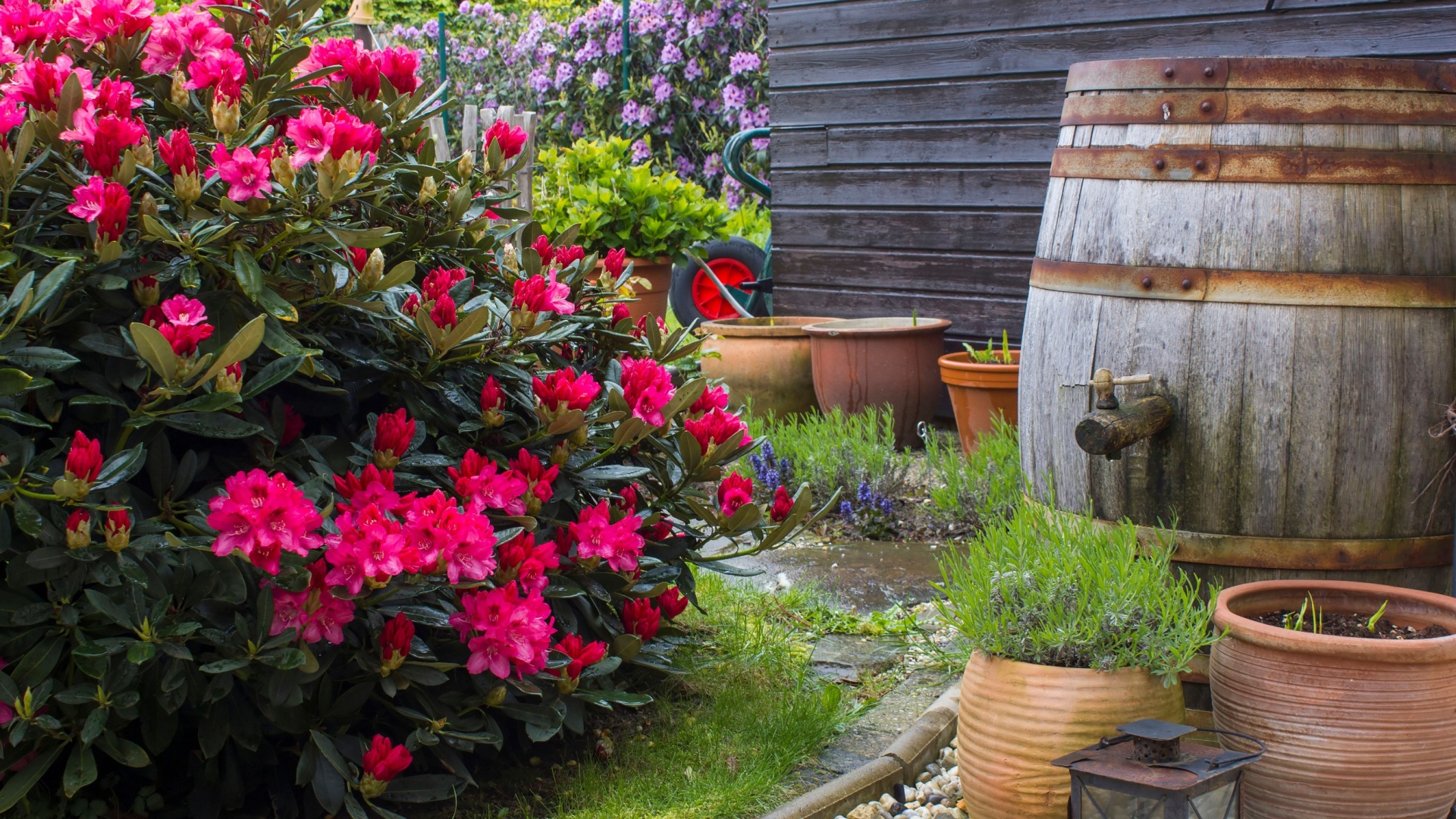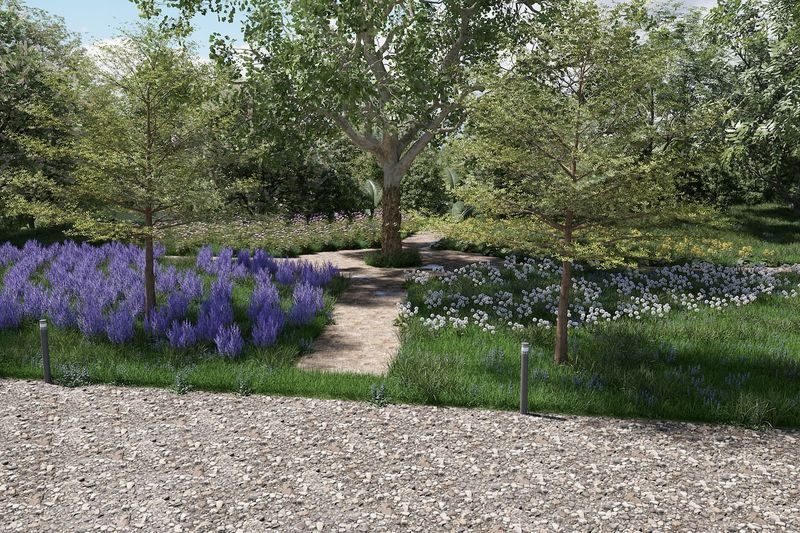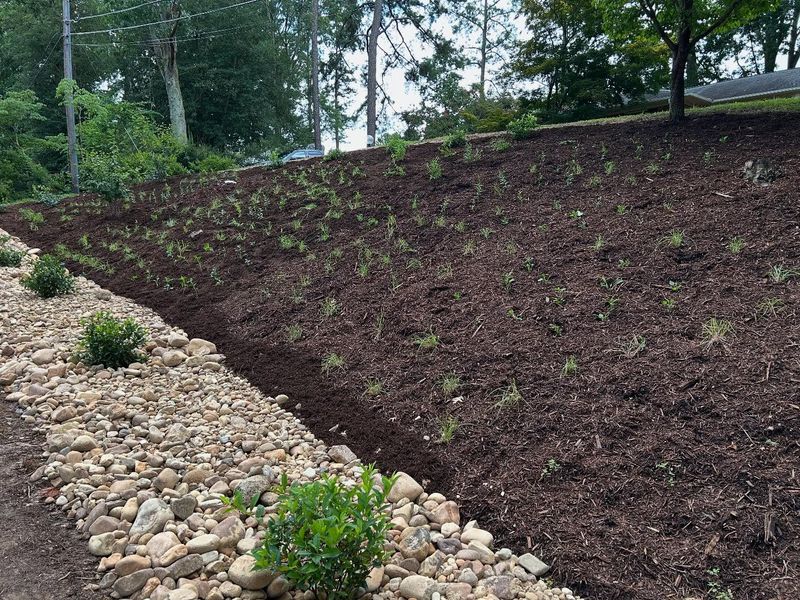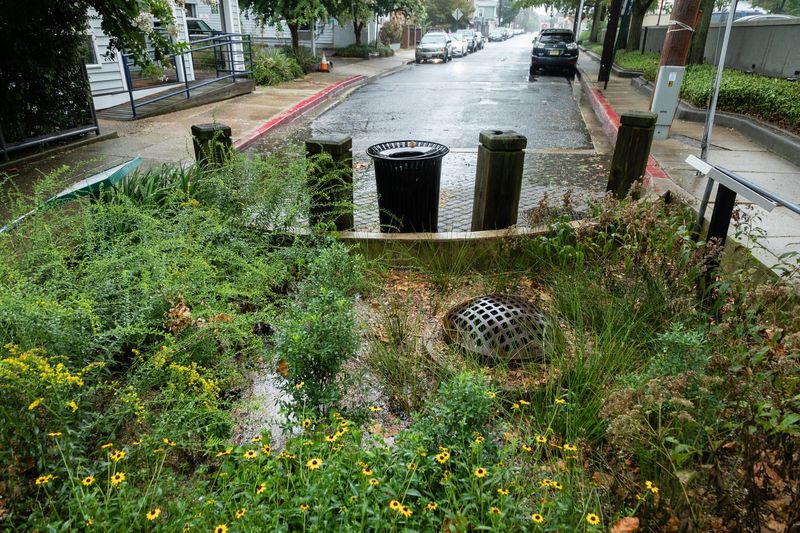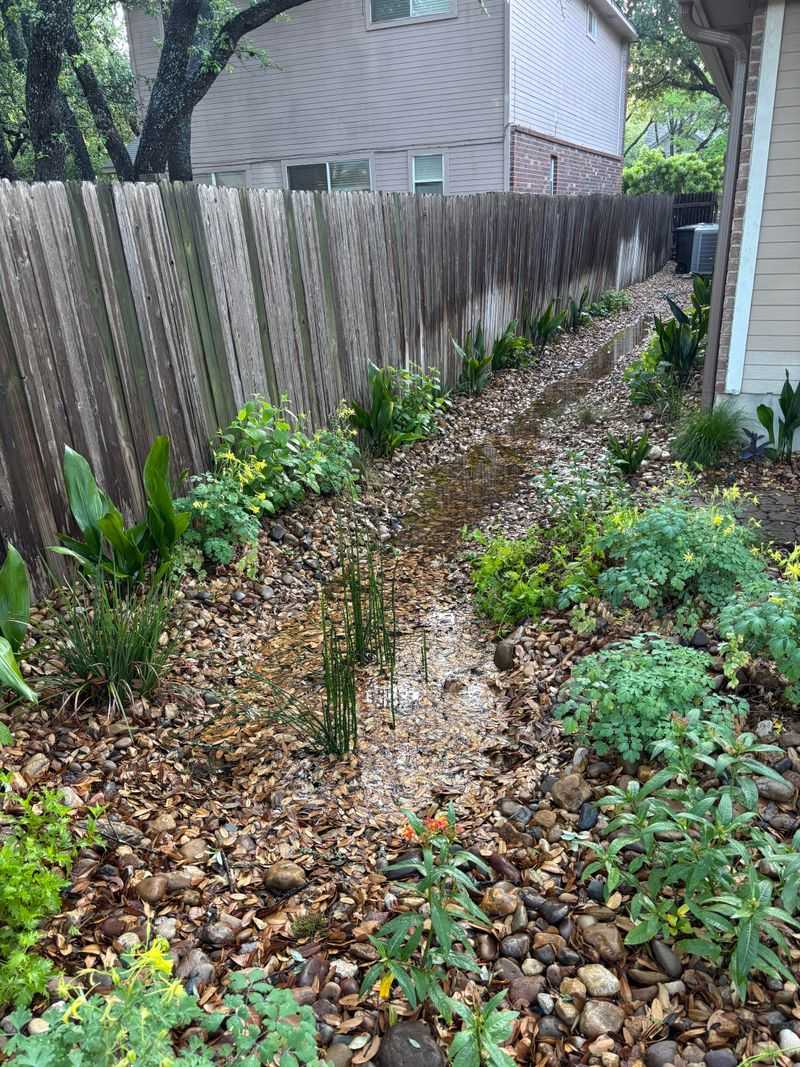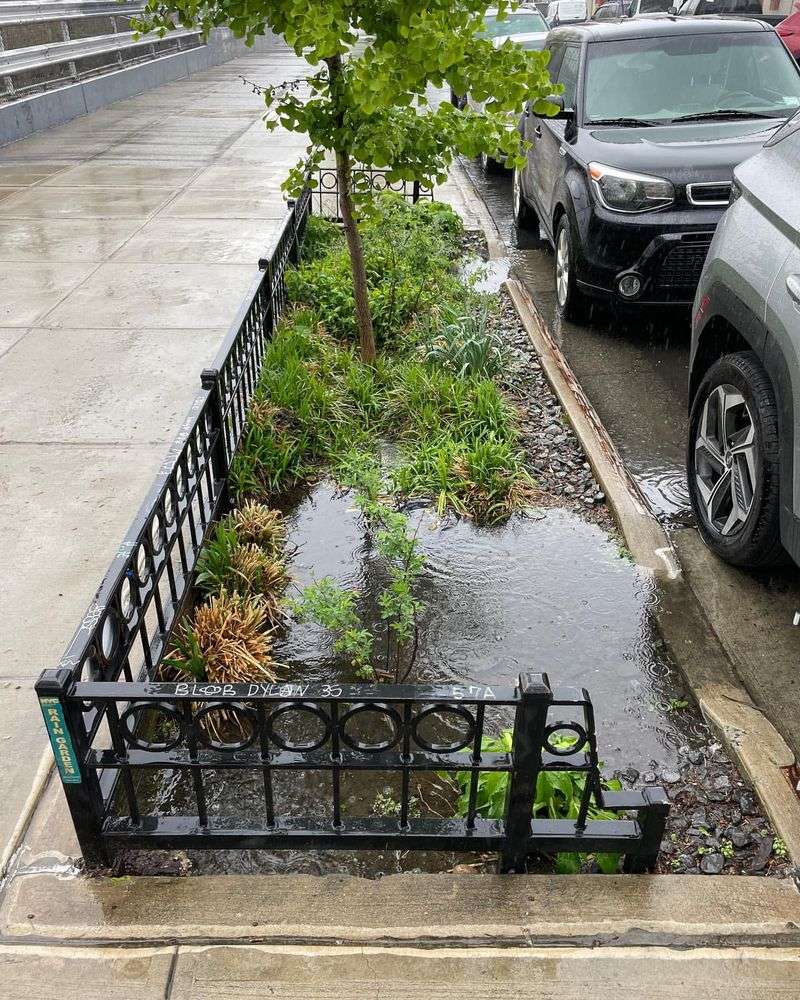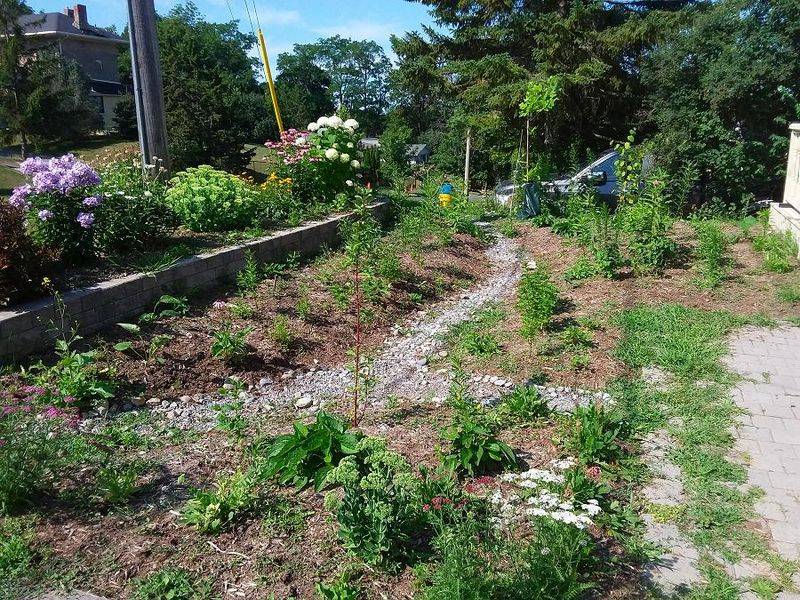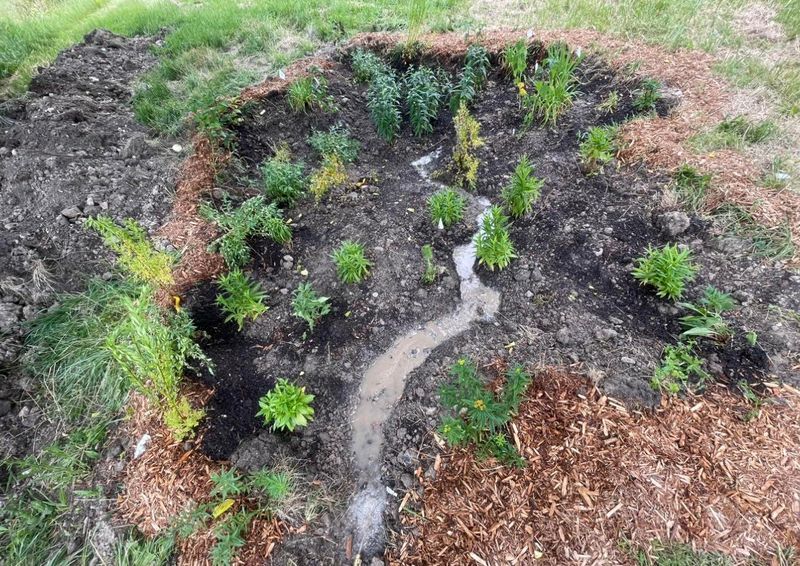Rain gardens are becoming a secret weapon for San Francisco gardeners facing both drought and occasional downpours. These specially designed garden areas collect rainwater runoff from roofs, driveways, and other hard surfaces.
By slowing and filtering water, they help solve two big problems at once: water conservation during dry months and reducing flooding when heavy rains hit our hilly city.
1. Natural Water Storage Systems
Rain gardens act like mini reservoirs right in your yard. The shallow depressions filled with native plants capture rainwater that would otherwise flow into storm drains.
During San Francisco’s rainy season, these gardens can hold hundreds of gallons of water, slowly releasing it into the soil. This stored moisture remains available to plants for weeks after rainfall, reducing the need for supplemental watering.
2. Flood Protection For Hilly Neighborhoods
San Francisco’s famous hills make rainwater rush downward fast, overwhelming storm drains and causing localized flooding. Rain gardens strategically placed on slopes intercept this runoff before it becomes problematic.
By slowing water’s journey downhill, these gardens give it time to soak into the ground rather than pooling on streets or in basements. Many hillside residents have reduced basement flooding by 80% after installing properly designed rain gardens.
3. Drought-Resistant Landscaping Solution
Rain gardens shine during California’s frequent drought periods. Once established, these gardens rarely need additional watering beyond what nature provides.
Native plants like Douglas Iris and Pacific Coast ferns thrive in rain garden conditions, having evolved to handle both wet winters and dry summers. The deep roots of these plants access moisture stored deep in the soil, staying green even when water restrictions are in place.
4. Groundwater Recharge Zones
Beneath San Francisco lies precious groundwater that needs regular replenishment. Rain gardens allow water to percolate slowly through soil layers instead of washing away into the bay.
Each properly designed rain garden can help recharge hundreds of gallons of groundwater annually. For neighborhoods like Sunset and Richmond that sit atop important aquifers, this recharge function helps maintain water table levels even during extended dry periods.
5. Pollution Filters For Urban Runoff
Rainwater flowing across San Francisco streets picks up oil, fertilizers, and other pollutants. Rain gardens act as natural filtration systems that trap these contaminants before they reach the bay.
The combination of soil, mulch, and plant roots creates a biological filter that breaks down many pollutants. Studies show properly designed rain gardens can remove up to 90% of common pollutants from urban runoff, protecting our precious bay ecosystem.
6. Microclimate Moderators
San Francisco’s famous microclimates can be further enhanced with strategically placed rain gardens. The increased soil moisture creates cooling effects through evaporation during warmer days.
This natural air conditioning can reduce temperatures around your home by 5-10 degrees during heat waves. For foggy neighborhoods like the Sunset, rain gardens with appropriate plant selection can also break cold winds, creating more comfortable outdoor spaces.
7. Wildlife Sanctuaries In The City
Urban wildlife finds refuge in rain gardens across San Francisco. The combination of water, native plants, and insects creates a thriving ecosystem right in your yard.
Hummingbirds visit Mimulus flowers while beneficial insects pollinate native blooms. Many gardeners report seeing California butterflies like Painted Ladies and Anise Swallowtails return to their neighborhoods after installing rain gardens with appropriate native plants.
8. Community Flood Prevention Networks
Neighbors working together to install connected rain gardens create powerful flood prevention networks. When multiple properties manage their rainwater, entire blocks benefit from reduced flooding risks.
The Ingleside neighborhood pioneered this approach after severe flooding in 2014. Their community rain garden initiative reduced street flooding by 60% during heavy storms. City grants now support similar neighborhood-scale projects, with free workshops teaching installation techniques.
9. Money-Saving Garden Investments
Rain gardens deliver impressive financial returns for San Francisco homeowners. Water bill savings can reach $300-500 annually as irrigation needs decrease dramatically.
Property protection from flood damage represents even greater savings, as basement flooding repairs typically cost thousands. Additionally, many homeowners qualify for city rebates covering up to 50% of installation costs through San Francisco’s RainSmart program, making these gardens smart investments for budget-conscious gardeners.

